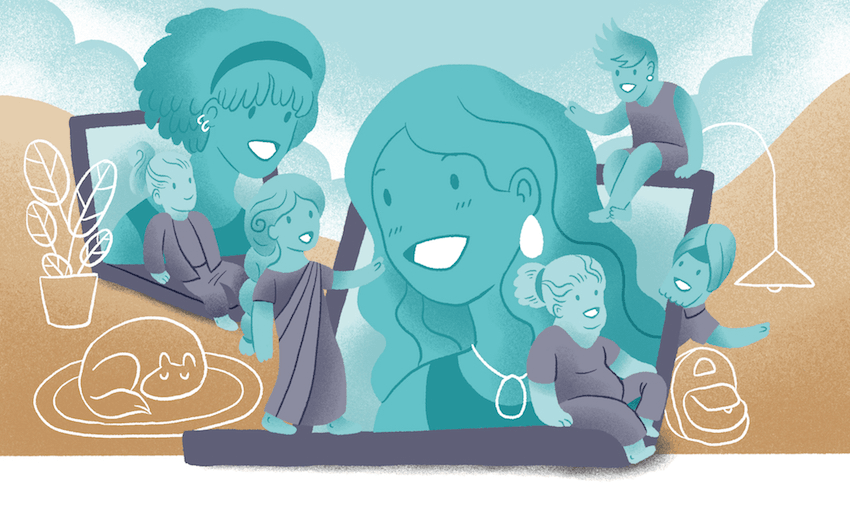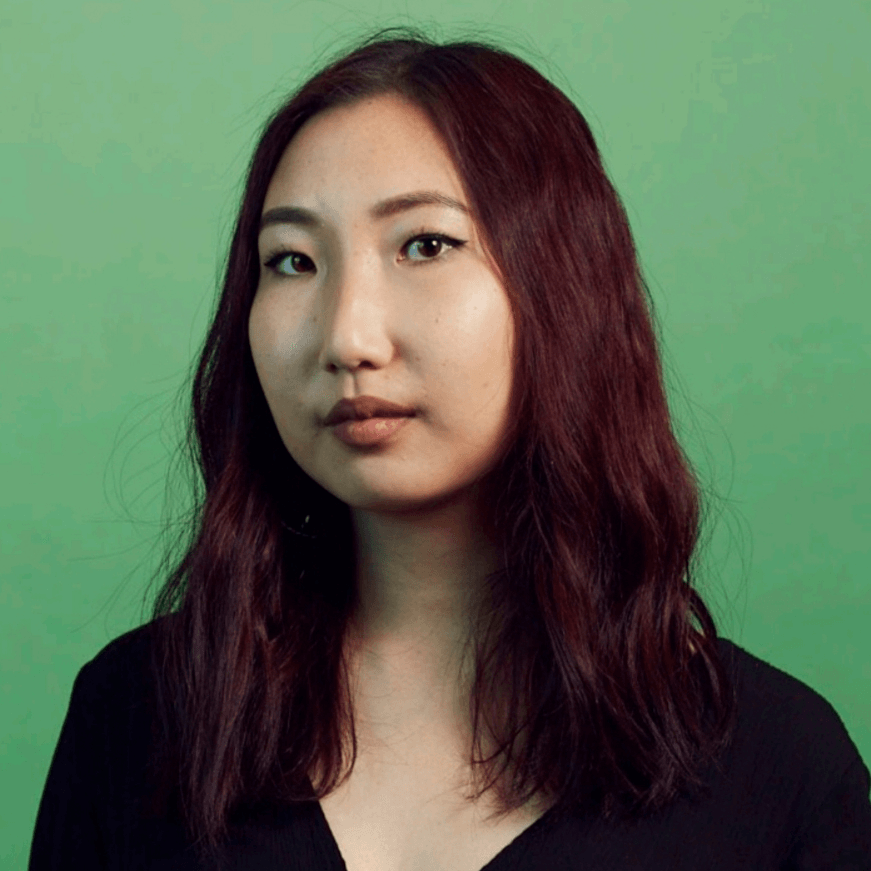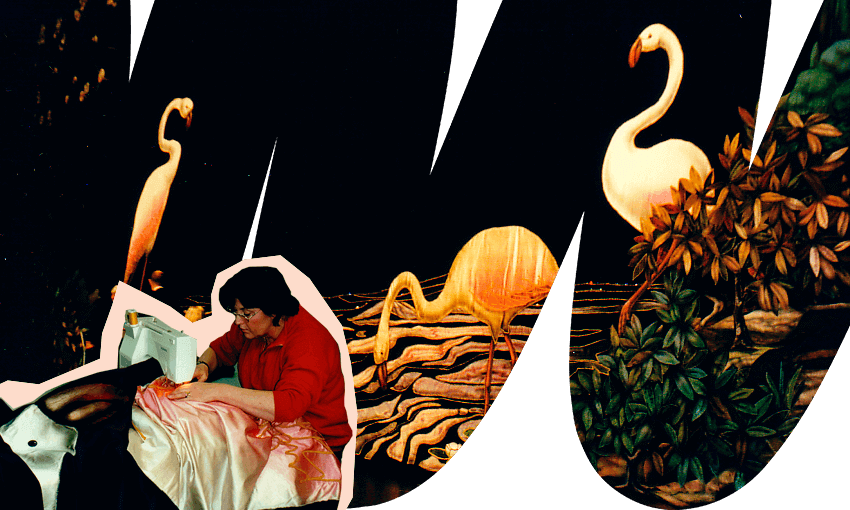Borders may not be open for students wanting to do exchange programmes at the moment, but that’s not stopping New Zealand high schoolers learning cultural competency from their peers around the world.
This content was created in paid partnership with Education New Zealand.
“One of the things I was always told by my parents as a kid was to think before I speak,” says 17-year-old Malindi Reihana-Ruka from Kerikeri. “At the time I thought ‘OK, just don’t be mean or whatever’, but when I think about it now it’s so much more than just thinking about what you’re going to say – it’s also thinking about how what you’re going to say might make someone feel or how you might be perceived after saying that. Because sometimes, things just come out that you think are funny but other people might not.”
Bright, confident and wise beyond her years, Reihana-Ruka is in her final year at Northland’s Springbank School. She’s busy preparing for her upcoming exams, but reflects fondly on an experience she had earlier this year taking part in the New Zealand Global Competence Certificate (NZGCC) programme, a four-week online course teaching students about engaging with people from different backgrounds and cultures. Her cohort, made up of high schoolers in the Northland region along with students from India, formed a multicultural international classroom. Through animated videos, quizzes and open discussions they learned about empathy, overcoming stereotypes, resolving conflicts and bridging gaps between different ways of thinking.
“Growing up, we always had international students stay with us and sometimes you’d say something jokingly but they’d get really hurt. When I was little I didn’t understand why because I didn’t actually understand that what I was saying was mean,” she says.
But after learning more about generalisations and stereotypes, Reihana-Ruka now understands. “I think about what I say more often. So that was something that really resonated with me because I realised that was something I personally needed to work on, which I think I’m getting better at.”
Since being introduced in New Zealand last year, hundreds of high school students and teachers from New Zealand and overseas have now completed the NZGCC. The research-backed programme has been around for some time now, having originally been developed by international youth exchange organisation AFS. In 2020, with Covid-19 closing borders around the world, Education New Zealand (ENZ), in collaboration with Massey University, brought the programme here as a way to foster cultural competency among young people in the absence of travel.
“We want everyone to have the skills to be able to live, work and learn globally, and when Covid happened we did a small pilot with New Zealand schools to see if there was appetite,” says Mary Camp, business development manager at ENZ, the government agency helping New Zealand realise the social, cultural and economic benefits of international education.
She’s helped successfully expand the programme from its inception. With travel restrictions preventing thousands of international students coming to New Zealand, and vice-versa, the NZGCC became a way to bridge that gap in a small but significant way.
“We’ve received so much amazing feedback from participants on what they learnt, but also on some of the friendships that have come out of it with students FaceTiming each other and connecting outside of the programme,” says Camp. “Having a lot of different cultures in a classroom means you’re learning from each other, but also making connections to other countries and, for us, to New Zealand as well.”
Throughout the course, participants are required to complete online modules on everything from different communication styles to microaggressions. Microaggressions are subtle instances of discrimination – such as when people don’t try to correctly pronounce names from other languages. Participants in the NZGCC learn about these and preconceived assumptions and how to become aware of their own biases. At the end of each week, a live dialogue session is run by a qualified facilitator from Massey University.
“The live sessions enable learners to reflect and share what they learned through the course modules. Speaking with other learners deepens their awareness of their own cultural identity and helps them explore ways to navigate differences in cultures,” says Andrea Flavel, director of the centre for professional and continuing education at Massey University.
“I’ve met some really good friends that I still keep in contact with now because of those breakout sessions,” says Reihana-Ruka. “At the time we had our school ball coming up and I’d be going to netball games and speech competitions while India was in lockdown and had been for a long time. So I think it was cool for them … since they got to come along for that ride through our Zoom sessions.”
Hawke’s Bay student Zac Fitzgibbon participated in the programme in August along with high schoolers from other parts of New Zealand and South Korea. He says it was interesting seeing both the similarities and differences between the two countries, especially realising that “some of the things that I thought weren’t a problem here were a problem there and vice versa, so it was really useful in giving me a whole new perspective on life.”
Currently in year 13 at Lindisfarne College, Fitzgibbon plans on moving to Wellington next year to study law. He says one of the most useful things he learnt from the course was the different ways we deal with conflict.
“I think it really helped me understand how I personally deal with conflict and how others deal with it. That way when conflict arises, I can adapt the way I communicate with others to fit how they prefer to address a problem,” he says. “You’ll talk to someone and realise that this person responds to conflict in this way, so therefore, I’ll adapt how I communicate with them so we can healthily address the issue we might have.
“This course gives us the tools to help us communicate with anyone and foster good relationships with anyone regardless of who they are.”
With a degree in surveying at Otago University on her horizons, Reihana-Ruka says her dream job is to specialise in hydrographic surveying, combining her love for the ocean and outdoors with her desire to travel and meet new people. She says the skills she learnt as part of the programme will no doubt come into use once she graduates, but also at university where she plans on taking a course in te reo Māori to learn more about her own identity.
“I’m half-Māori, and one thing that really hit home when I was doing the NZGCC was I never realised how alone or out of place I felt at something like a marae because I look white. I never really acknowledged those feelings – I’d just kind of push them away. But after acknowledging them, I was like ‘oh maybe I should try and change that’,” she says.
“I’m definitely growing. I think it’s just a never ending process of growth. And hopefully once I finish uni I’ll be able to travel and experience everyone’s culture. And I think now having done this programme, I feel like I know how I can make myself more comfortable in different cultures and make myself more approachable when I go overseas.”
In 2018, the government announced its International Education Strategy comprised of three aims, one of which is to foster “global citizens” equipped to “live, work and learn” anywhere in the world. Lisa Futschek, general manager international at ENZ, says the NZGCC is just one initiative among many helping to reach this goal.
“In a globalised world it’s absolutely essential that we’re able to work alongside, communicate with, empathise, and problem solve across other cultures, languages and different experiences, and we can’t do that unless our young people develop and build those skills and know how to approach those kinds of situations,” she says.
“Without international students coming into New Zealand at the moment, the NZGCC, in a small way, helps to replicate that function of having Kiwi students sitting alongside international students. Where they might’ve once had lunch, played volleyball or gone on trips together where they could share their lives and perspectives, we can’t do that at the moment, which is why this programme is so rich.”
Such skills have now been fostered among college students across Auckland, Tauranga, Northland, Whanganui, Hawke’s Bay, Dunedin and Christchurch. In addition, the NZGCC programme has also proven valuable to teachers, whose role in educating our future generations is so important.
“I remember a teacher in Mexico saying in their testimonial that ‘I used to think the really important thing about teaching was the content. But now I realise it’s actually about being empathetic to other people and empowering other people to have the skills they need for the future’,” says Camp. “And as an ex-teacher, that’s just really thrilling to see, and for students, it’s just so inspiring to hear them talk about the future and how they feel equipped for it.”
A survey of the first cohort of NZGCC graduates has shown substantially increased levels of knowledge about global citizenship and the ability to act appropriately, with 65% of students saying their knowledge had ‘increased greatly’ after the course and 45% believing their ability to act as a global citizen had also ‘increased greatly’. Respondents reported increased awareness of cultural differences and the need to respect those differences with an increased recognition of skills such as empathy and listening alongside learning new techniques to resolve conflicts.
By the end of the year, it’s estimated that 900 people from both New Zealand and overseas will have completed the NZGCC programme with participants from all over the world including Vietnam, Japan, South Korea, Indonesia, Chile, Colombia, Brazil, Mexico and Peru. ENZ is also granting 100 scholarships to students from decile one to five schools across New Zealand to participate in a virtual exchange with their peers in Asia. And while borders begin to slowly open up, Futschek sees the NZGCC as a valuable asset even in a post-Covid world.
“I see this kind of programme ongoing even when New Zealand’s own borders reopen, as this kind of virtual exchange is part of our diversification strategy that has been critical since the pandemic. Not every student is going to have the means or ability to travel so using the digital technologies that we rely on today to bring those students together in a virtual format is really compelling.”
Learning cultural competency is not just important when students do get to travel, the skills they gain from these cross-cultural interactions are just as relevant here in New Zealand, and can be carried through their studies and into the workforce.
“Our research shows businesses who employed staff with cross-cultural competencies found this contributed to a more energising workplace, which helped to foster creativity and innovation. So at a time when there’s a lot of strife and polarisation in the world, we take educating students for the future quite seriously.”




